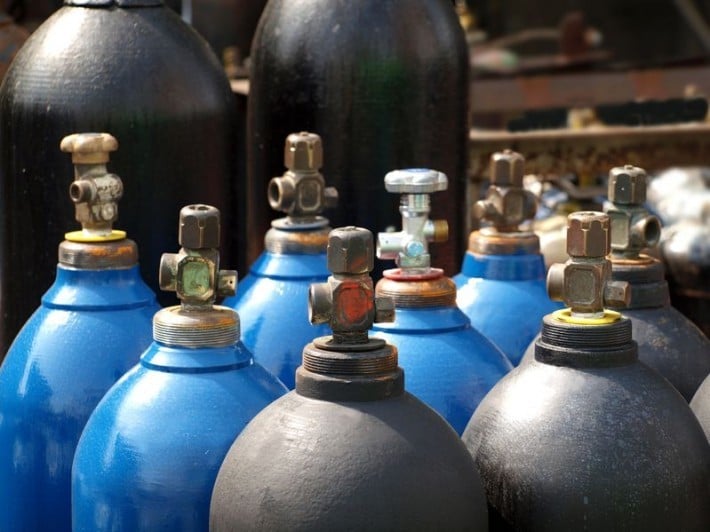Many workplaces utilize compressed gas cylinders on a daily basis whether it’s for refrigeration, welding, heating or other various uses. These cylinders, assist in day-to-day work, can be quite dangerous and pose as a serious safety risk for your workforce. Each year, over 5,000 workers are injured at the workplace due to mishandling compressed gas cylinders. With proper training, these injuries can be avoided and reduce the risk of injuring your team.
These containers filled with both flammable and nonflammable gases, are bound to fall over if left unsecured, potentially causing a rupture to the cylinder’s valve or worse. Once there’s a gas leak, the cylinder can find itself moving uncontrollably causing not only damage to property, but also severely injuring your workers as well. To properly secure these cylinders, chain them up and install the valve cap to avoid a break to the seal.
Compressed gas cylinders also need to be clearly identified with a label to ensure all parties are aware of what type of gas is inside. Different gasses require different storage practices and carry different levels of risk. For example, propane and acetylene have a primary hazard of being flammable while oxygen has a primary hazard as being an oxidizer that can accelerate combustion.
Testing is another practice taken to ensure the safe handling of these compressed gas cylinders. Depending on the type of cylinder storing the gasses, your timing on testing will differ; anywhere from every 5 years up to 12 years. Along with testing the cylinders themselves, you’ll also want to ensure that their storage environment does not exceed 125 degrees Fahrenheit, as this forces a rise in internal pressure and could cause the container to fail.
Ultimately, the risk that comes with having compressed gas cylinders at your workplace can be reduced greatly by conducting a thorough and comprehensive training program. Our newly completed title, Compressed Gas Cylinders Training, is a program that teaches your team how to properly handle, transport and test these potentially volatile containers. Overall, some topics that are covered include: associated hazards, moving and transporting cylinders safely, positioning cylinders properly, proper “hook up” procedures and more.



